Many consider Bayou Nezpique the geographical division between Acadiana and Southwestern Louisiana. While this geographical division may be true today, before 1840, the Atchafalaya River was the eastern border of Southwestern Louisiana. The area covering then Southwestern Louisiana began as Appalousa Territory in the time before European settlers. Under French and Spanish Rule, the Appalousa Territory became the Opelousas County within Orleans Territory.
In 1774, the French community built St. Landry Catholic Church, dedicated to St. Landry, who was the Bishop of Paris from 650 to 656 A.D. The reach of the church parish equaled that of Opelousas County. In 1807, after Louisiana was sold to the United States, the Orleans territory was divided into 19 parishes. What was Opelousas County became St. Landry Parish. Opelousas was the county seat, and after St. Landry Parish was created, it remained the parish seat. In 1840, the largest parish in Louisiana was divided into two, creating Imperial Calcasieu, and then later both St. Landry and Calcasieu would be divided into four parishes: Acadia, Allen, Beauregard, Calcasieu, Cameron, Evangeline, Jefferson Davis and Saint Landry.

Opelousas
The name “Opelousas” comes from the Appalousa tribe that won the territory of what would become Southwestern Louisiana in a fierce battle with the Attakapa. The story goes that in the early-16th Century, the Choctaws, the Alabamans, and the Appalousa tribes joined together to decimate eastern tribe of the warlike-Attakapa. In a pact between the victorious tribes, the Appalousa gained control of the western banks of the Atchafalaya River. In 1690, the first European to record trade with the Appalousa nation was French coureur de bois (trapper and hunter), Michel de Birotte. By 1699, France had named Louisiana as a territory and designated the territory of the Appalousa nation as the Opelousas territory. “Opelousas” means “blackleg.” The Appalousa tribe either wore black paint on their legs, or their legs were stained a dark color. One theory is that a stagnant lake nearby that the Appalousa used for hunting and fishing was filled with minerals and its bottom was covered in leaves, making the water a special kind of muddy and causing their legs to stain.
It would be some time though before the French government surveyed its territory. In 1720, Ensign Nicolas Chauvin de la Frénière and two others were sent to patrol the Opelousas territory. The next year the French government established a trading post called le Poste des Opelousas to supply the population it would encourage and to be a stopping point between its two other major settlements, Natchitoches and New Orleans. The French were mostly interested in populating their immediate area of their post and did not issue many land grants, except to soldiers as payment for their service. Louis Pellerin was the first to be issued a land grant for his service.
The French did bring people to Southwestern Louisiana, but it was not until the Louisiana territory was ceded to Spain in 1762 that the population began to bustle, even though the French were not aggressively promoting settlement of the Opelousas Territory. In 1764, the Spanish colonial government built their own outpost to protect its Caribbean holdings. By 1769 there were 100 families in the Opelousas area. In 1782, Don Alejandro O'Reilly, Spanish governor of Louisiana, began diligently encouraging settlement of Southwest Louisiana. An ordinance was issued to allow settlers to acquire land grants in the frontier of the Opelousas Territory. By that time, the Acadian migration west was well underway. Many had made their way from neighboring Attakapa territory to the south and when the lands of Opelousas opened, many took advantage of the new opportunity. These Acadians were French who had migrated from Nova Scotia in 1763, after expulsion by the English in the aftermath of the defeat of France in the French and Indian Wars.
Land grants from the Crown were not the order of business. Most seeking land had to petition officials in Opelousas to win concessions of land, sometimes orally and other times in writing.
It was said that during the Spanish regime, any man who desired to obtain a tract of land had only to secure the verbal permission of the authorities to occupy it and that the vague rights thus acquired might be transmitted by inheritance or even seized for debt. As a result clear titles could be shown to barely one fourth of the lands.
--Quaife, Milo M., Proceedings of the Mississippi Valley Historical Association for the Year 1914-15, Vol. VIII
 Many of the concessions of land to settlers were along waterways. The land was measured in arpents. An arpent front was a tract of one arpent upon the river bank extending backward for a total area of forty arpents. Concessions of land ranged in size from five to twenty five arpents front for larger holdings. The smaller holdings were two or three arpents front. The arpent measurement system allowed more people access to waterways and enough land for farming and livestock.
Many of the concessions of land to settlers were along waterways. The land was measured in arpents. An arpent front was a tract of one arpent upon the river bank extending backward for a total area of forty arpents. Concessions of land ranged in size from five to twenty five arpents front for larger holdings. The smaller holdings were two or three arpents front. The arpent measurement system allowed more people access to waterways and enough land for farming and livestock.
 Many of the concessions of land to settlers were along waterways. The land was measured in arpents. An arpent front was a tract of one arpent upon the river bank extending backward for a total area of forty arpents. Concessions of land ranged in size from five to twenty five arpents front for larger holdings. The smaller holdings were two or three arpents front. The arpent measurement system allowed more people access to waterways and enough land for farming and livestock.
Many of the concessions of land to settlers were along waterways. The land was measured in arpents. An arpent front was a tract of one arpent upon the river bank extending backward for a total area of forty arpents. Concessions of land ranged in size from five to twenty five arpents front for larger holdings. The smaller holdings were two or three arpents front. The arpent measurement system allowed more people access to waterways and enough land for farming and livestock.The Louisiana Purchase
In 1799, Napolean Bonaparte took control of France. After sending a scout to observe the offerings of Louisiana, Napolean asked Spain to retrocede the Louisiana colony back to France. Napolean soon fit Louisiana into his plan for establishing a Caribbean Empire and signed the Treaty of San Ildefonso, which transferred Louisiana to France in secrecy. The transfer was kept secret because war with Britain and an announcement of the transfer would allow Britain with its naval dominance to easily take the Louisiana colony as part of its war effort.
Apparently, the transfer was not entirely secret. Once Thomas Jefferson learned of the transfer to France, he grew nervous. Napolean, in control of the Louisiana territory, made Thomas Jefferson nervous for two reasons. First, Spain had temporarily withdrawn America’s duty-free “right of deposit” in 1798. With such power in Napolean’s hands and his plan to build a Caribbean Empire, American commerce west of the Appalachians would be immensely strained if Napolean had control of New Orleans. Second, such an Empire would seriously deflate Jefferson’s vision of the American people spanning the North American Continent by occupation not military force. So, Jefferson sent James Monroe and Robert Livingston to Paris to negotiate the purchase of Florida.
 In the Caribbean, yellow fever and a rebellion in Santo Domingo thwarted Napolean’s conquest and forced him to re-focus his sights on protecting his European Empire. War with Britain seemed imminent and such a conflict would cost money. Monroe and Livingston had authorization from Congress to spend $2 million for New Orleans. Jefferson told them to go as high as $9 million to get Florida. When they were offered the entire Louisiana Territory, they negotiated a treaty for $15 million, of which nearly $4 million was to be paid to U.S. citizens to satisfy debt against France. The treaty was dated April 30, 1803. Napolean signed the treaty on May 2, and the United States Senate ratified the treaty on October 20, 1803. The United States took official control on December 20, 1803.
In the Caribbean, yellow fever and a rebellion in Santo Domingo thwarted Napolean’s conquest and forced him to re-focus his sights on protecting his European Empire. War with Britain seemed imminent and such a conflict would cost money. Monroe and Livingston had authorization from Congress to spend $2 million for New Orleans. Jefferson told them to go as high as $9 million to get Florida. When they were offered the entire Louisiana Territory, they negotiated a treaty for $15 million, of which nearly $4 million was to be paid to U.S. citizens to satisfy debt against France. The treaty was dated April 30, 1803. Napolean signed the treaty on May 2, and the United States Senate ratified the treaty on October 20, 1803. The United States took official control on December 20, 1803. With over eight hundred thousand square miles, the United States subdivided the Louisiana territory to make governing easier. In 1804, the United States formed the Orleans territory with a northern border on the thirty-third parellel, the eastern border on the Mississippi River, the southern border on the Gulf of Mexico and the western border at the Sabine River. On April 10, 1805, the Orleans Territory was divided into 12 counties, including Opelousas County. Spain, however, claimed the lands within Opelousas Territory were still within its border and that its border with Louisiana was the Red River. The Treaty of San Ildefonso had neglected to draw a definite border.
With over eight hundred thousand square miles, the United States subdivided the Louisiana territory to make governing easier. In 1804, the United States formed the Orleans territory with a northern border on the thirty-third parellel, the eastern border on the Mississippi River, the southern border on the Gulf of Mexico and the western border at the Sabine River. On April 10, 1805, the Orleans Territory was divided into 12 counties, including Opelousas County. Spain, however, claimed the lands within Opelousas Territory were still within its border and that its border with Louisiana was the Red River. The Treaty of San Ildefonso had neglected to draw a definite border.On November 5, 1806, an agreement between Spanish Lieutenant Colonel Simon de Herrera and United States General James Wilkinson made the land between the Sabine River and the Calcasieu River neutral ground. Both agreed to withhold military installation and law enforcement in the region, which became known as the “Free State of Sabine.”

This attracted outlaws, who made travel dangerous and trade unprofitable. In 1810 and 1812, Spain and the United States sent troops to make travel and trade safe again in Southwestern Louisiana. The neutral ground remained so until February 22, 1819, when Spain and the United States signed the Adams-Onis Treaty. This treaty made the Sabine River the border between Spanish Texas and the state of Louisiana. However, lawlessness continued. It was not until 1822, when the United States built Fort Jesup, located near present-day Many and commanded by Zachary Taylor, that order was restored to the region.
On April 30, 1812, the Orleans territory gained statehood in the United States of America as Louisiana. The Louisiana legislature divided the state into parishes, from which the “Imperial St. Landry” was created. Its territory spanned from the Sabine River to the Atchafalaya River basin. Opelousas was chosen as the parish seat.
Lake Charles
Lake Charles was first settled in 1781. The first European settlers arrived in the Lake Charles area. They came from Bordeaux, France. The lake and river in Southwest Louisiana attracted Martin LeBl
 eu and his wife, who settled about six miles from where Charles Sallier would settle shortly after. Sallier, who would eventually marry a daughter of the LeBleus, settled on the banks of the lake that became known as Charley’s Lake. When others joined LeBleu and Sallier, the settlement became known as Charleston.
eu and his wife, who settled about six miles from where Charles Sallier would settle shortly after. Sallier, who would eventually marry a daughter of the LeBleus, settled on the banks of the lake that became known as Charley’s Lake. When others joined LeBleu and Sallier, the settlement became known as Charleston.The first settlers that came after LeBleu and Sallier settled along the Rio Hondo, now known as the Calcasieu River. Rio Hondo was the name given the river by the Spanish. Calcasieu is the English adaptation of Quelqueshue, an Indian chief named “Crying Eagle” for whom the Indians of the region named the river. The first to homestead between the Calcasieu and Sabine rivers was Jose Mora in 1797.
As population grew to two thousand in the western portion of the Imperial St. Landry (near the Calcasieu River), the idea to move local government closer grew into action. The community organized and petitioned the legislature to divide the Imperial St. Landry. On March 24, 1840, the Louisiana legislature divided the Imperial St. Landry into four parishes, from which the Imperial Calcasieu was born. Marion, now known as Old Town, was chosen as the parish seat.
The Imperial Calcasieu was then drawn into ten wards on more than two million acres or 3,600 square miles between the Sabine River and Bayou Nezpique. From the ten wards, four parishes would be drawn, one of which would be Jefferson Davis Parish. Growth of Lake Charles was slow. In 1852, the parish seat of the Imperial Calcasieu was moved from Marion to Charleston, now known as Lake Charles. Settlement began to pick up in 1855 when Daniel Goos built a lumber mill and schooner dock to ship to the markets of Texas and Mexico via the Gulf of Mexico. In 1857, Charleston was incorporated. The population of Charleston and the surrounding area in 1860 was nearly 6,000 people. Charleston was incorporated as Lake Charles on March 16, 1867. By the turn of the 20th Century, parish population had grown to just over 30,000.
For more detail, see The History of Lake Charles, by Stewart Alfred Ferguson, available at:
http://library.mcneese.edu/depts/archive/FTBooks/ferguson.htm
For a detailed assessment of Imperial Calcasieu, see The Economic Development of Southwestern Louisiana, 1865-1900, by Donald J. Millet, Sr., is available at:
http://library.mcneese.edu/depts/archive/FTBooks/millet.htm
A detailed assessment of the current "Imperial Calcasieu", is available at:
http://www.imcal.org/CEDS%202007.pdf
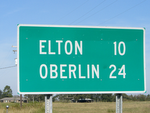
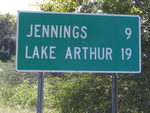
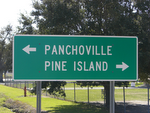
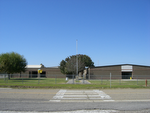
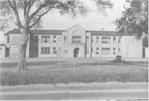
1 comment:
Hello!
Very good posting.
Thank you - Have a good day!!!
Post a Comment